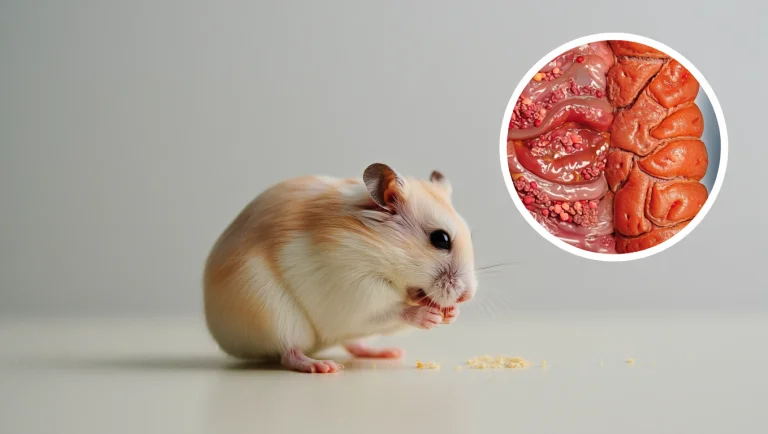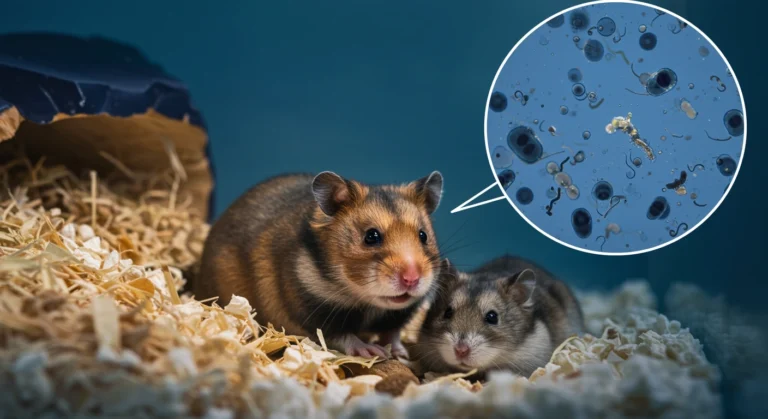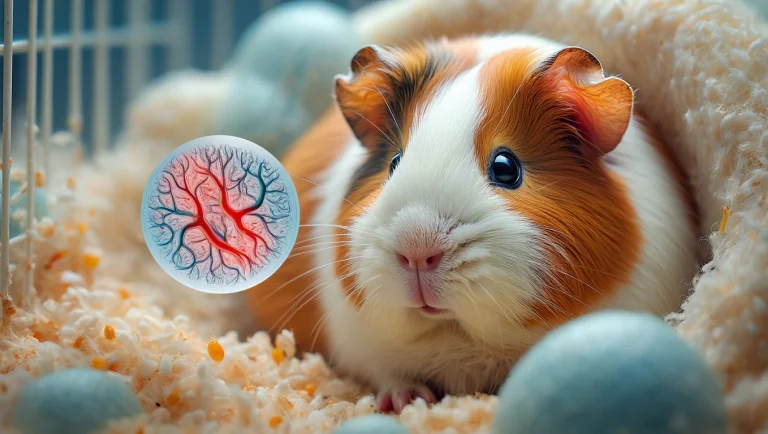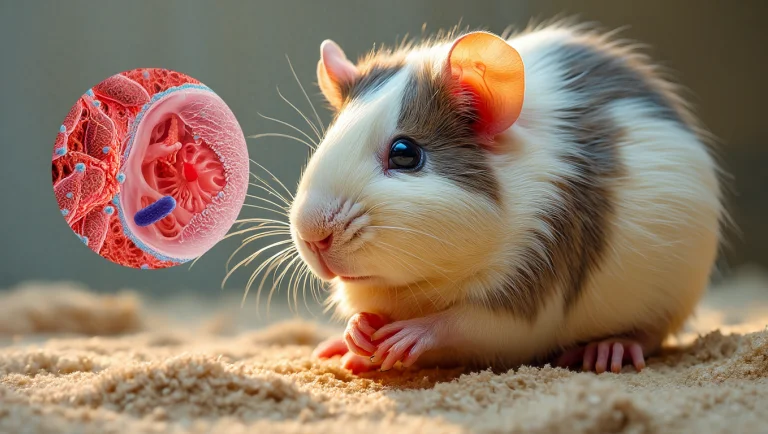Discover the 4 main causes of enteritis in rodents, recognize early symptoms, and learn the most effective treatments to save your pet from this serious condition.
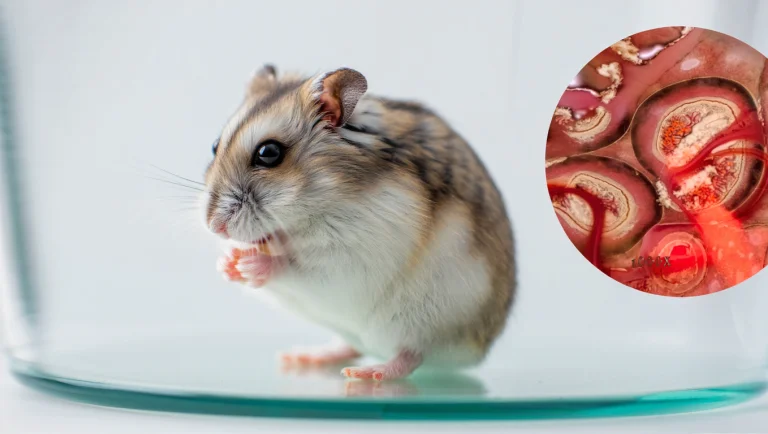
Table of Contents
Enteritis in rodents represents a significant health concern for pet owners and breeders alike. This inflammatory condition affecting the intestines can range from mild discomfort to life-threatening illness in hamsters, guinea pigs, mice, rats, and other rodent pets. When the delicate balance of a rodent’s digestive system is disrupted, enteritis can quickly develop, presenting a challenging situation for both the animal and their caretaker. With proper knowledge about the causes, symptoms, and treatment options, pet owners can take proactive steps to prevent this condition and respond effectively if it occurs. This comprehensive guide explores everything you need to know about enteritis in rodents, from recognizing early warning signs to implementing the most effective treatment strategies recommended by veterinary experts.
What is Enteritis in Rodents?
Enteritis is defined as inflammation of the intestinal tract, specifically the small intestine. In rodents, this condition can be particularly dangerous due to their small size and sensitive digestive systems. The inflammation disrupts normal digestive processes, leading to nutrient malabsorption, dehydration, and potential systemic infection if left untreated.
The Rodent Digestive System: Why It’s Vulnerable
Rodents possess a unique digestive system evolved to process high-fiber, plant-based diets. Key components include:
- Cecum: A specialized fermentation chamber that helps break down fibrous materials
- Hindgut fermentation: The process where beneficial bacteria break down complex carbohydrates
- Limited vomiting reflex: Most rodents cannot vomit to expel toxins or irritants
- Sensitive microbiome: The delicate balance of gut bacteria can be easily disrupted
This specialized digestive architecture makes rodents particularly susceptible to enteritis when their diet, environment, or health status changes. Their inability to vomit means that once harmful substances enter their system, they must pass through the entire digestive tract, potentially causing significant damage along the way.
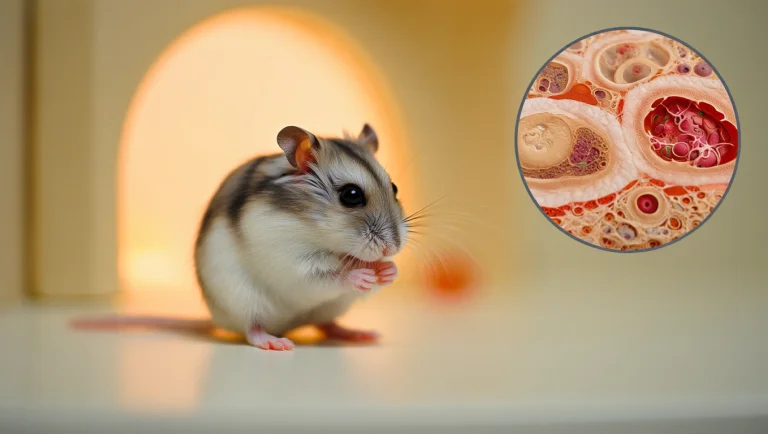
4 Primary Causes of Enteritis in Rodents
Understanding the root causes of enteritis is crucial for both prevention and treatment. Let’s examine the four main factors that contribute to this condition in pet rodents.
1. Infectious Agents
Bacterial, viral, and parasitic infections represent the most common causes of enteritis in rodents. These infectious agents can be introduced through contaminated food, water, or contact with infected animals.
Bacterial Infections
Several bacteria are known to cause enteritis in rodents:
- Clostridium difficile: A 2023 study published in the Journal of Exotic Pet Medicine found that C. difficile was present in 18% of pet rodents with enteritis symptoms.
- Salmonella spp.: Although less common in pet rodents than wild populations, salmonellosis can cause severe enteritis.
- Escherichia coli: Certain pathogenic strains can disrupt the normal intestinal flora.
- Lawsonia intracellularis: Particularly problematic in laboratory and commercial rodent colonies.
Viral Infections
Viral infections that can lead to enteritis include:
- Rotavirus: Common in young rodents with developing immune systems
- Coronavirus: Species-specific coronaviruses can affect different rodent types
- Mouse Hepatitis Virus (MHV): Primarily affects mice but can cause enteritis as part of its disease process
Parasitic Infections
Common parasites that cause enteritis in rodents include:
- Coccidia (Eimeria spp.): A recent survey found these protozoan parasites in up to 30% of pet store rodents.
- Giardia: Causes malabsorption and diarrhea
- Cryptosporidium: Can cause chronic enteritis, especially in immunocompromised animals
- Pinworms: While often asymptomatic, heavy infestations can lead to enteritis
2. Dietary Factors
Diet plays a crucial role in both causing and preventing enteritis in rodents. Several dietary factors can contribute to intestinal inflammation:
Sudden Diet Changes
Abrupt changes in diet disrupt the delicate microbiome balance in a rodent’s digestive system. The beneficial bacteria that aid in digestion require time to adjust to new food sources. Veterinary recommendations suggest that any diet change should be implemented gradually over 7-10 days.
Inappropriate Foods
Foods that can trigger enteritis include:
- High-sugar treats: Excess simple sugars can feed harmful bacteria
- High-fat foods: Rodents generally aren’t adapted to process large amounts of fat
- Inappropriate protein levels: Too much protein can lead to protein toxicity and enteritis
- Spoiled or moldy foods: Contain mycotoxins harmful to rodent digestive systems
Nutritional Deficiencies
Long-term nutritional imbalances can weaken the intestinal lining and immune system, making rodents more susceptible to enteritis:
- Vitamin C deficiency: Particularly important for guinea pigs, which cannot synthesize this vitamin
- Fiber deficiency: Inadequate fiber alters gut motility and microbiome composition
- Protein-energy malnutrition: Compromises intestinal barrier function and immune response
3. Environmental Stressors
Environmental factors significantly impact rodent health and can trigger enteritis episodes:
Housing Conditions
- Overcrowding: Increases stress hormones and pathogen transmission
- Poor ventilation: Ammonia buildup from urine can irritate respiratory and digestive systems
- Temperature extremes: Thermal stress compromises immune function
- Humidity issues: High humidity promotes pathogen growth; low humidity can cause dehydration
Psychological Stress
- Introduction of new animals: Disrupts established social hierarchies
- Frequent handling: Particularly stressful for prey animals like rodents
- Loud noises or vibrations: Constant exposure can lead to chronic stress
- Lack of hiding places: Rodents need secure areas to retreat when feeling threatened
Research from the American Association for Laboratory Animal Science indicates that chronically stressed rodents show a 40% increase in intestinal permeability, a key factor in developing enteritis.
4. Antibiotic-Associated Disruption
While antibiotics are sometimes necessary to treat bacterial infections, they can inadvertently cause enteritis through several mechanisms:
Microbiome Disruption
Antibiotics don’t discriminate between beneficial and harmful bacteria. Broad-spectrum antibiotics can destroy the beneficial gut flora that normally:
- Compete with pathogenic bacteria for resources
- Produce short-chain fatty acids that nourish intestinal cells
- Regulate immune responses in the gut
Overgrowth of Resistant Organisms
When beneficial bacteria are eliminated, antibiotic-resistant organisms can proliferate:
- Clostridium difficile: Naturally resistant to many antibiotics
- Certain strains of E. coli: Can develop antibiotic resistance
- Candida and other fungi: Not affected by antibacterial agents
Prevention Strategies During Antibiotic Treatment
To reduce the risk of antibiotic-associated enteritis:
- Use the narrowest spectrum antibiotic effective against the target infection
- Consider probiotic supplementation (under veterinary guidance)
- Maintain hydration during antibiotic courses
- Monitor for early signs of digestive disturbances
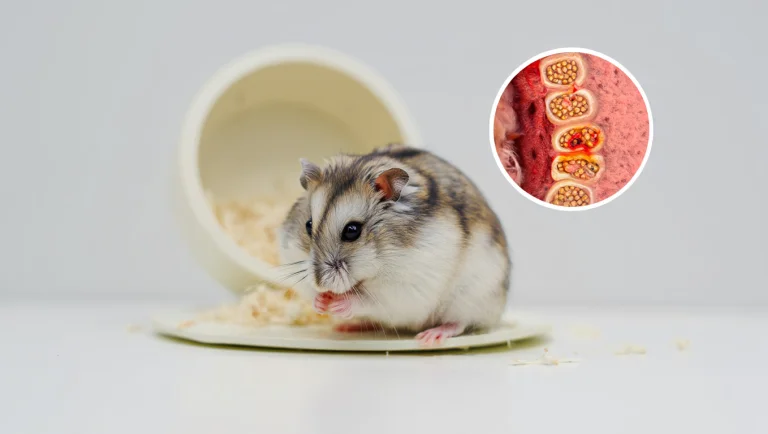
Clinical Signs and Symptoms of Enteritis in Rodents
Recognizing the signs of enteritis early can be life-saving for rodents. Due to their small size and prey animal instincts, rodents often hide illness until it becomes severe. Here are the key symptoms to watch for:
Gastrointestinal Symptoms
- Diarrhea: The most obvious sign, ranging from soft stools to liquid discharge
- Changes in fecal appearance: May include mucus, blood, or unusual coloration
- Reduced fecal output: Can indicate intestinal blockage or severe inflammation
- Bloating or distended abdomen: Indicates gas accumulation or fluid buildup
Behavioral Changes
- Reduced activity: Lethargy or reluctance to move
- Hunched posture: Indicates abdominal pain
- Tooth grinding (bruxism): A sign of pain in many rodent species
- Poor grooming: Unkempt coat, especially around the anal area
- Increased aggression or withdrawal: Changes in normal temperament
Systemic Signs
- Weight loss: Often rapid and significant
- Dehydration: Assessed by skin elasticity and sunken eyes
- Reduced food and water intake: May refuse favorite treats
- Rough or dull coat: Indicates poor nutrition and hydration status
- Cold extremities: In advanced cases, poor circulation leads to cool ears, feet, and tail
Species-Specific Presentations
Different rodent species may show variable symptoms:
Hamsters
- Often present with “wet tail” (diarrhea with wet, soiled fur around the tail)
- May develop a characteristic sour odor
- Rapid progression to severe illness
Guinea Pigs
- May show tenesmus (straining to defecate)
- Pronounced weight loss due to high metabolic rate
- Vitamin C deficiency may exacerbate symptoms
Mice and Rats
- May develop rectal prolapse with severe straining
- Often show more subtle initial symptoms
- Can become rapidly dehydrated due to small body size
Gerbils
- Typically show less diarrhea but more pronounced weight loss
- May exhibit increased thirst
- Often develop a rough, scruffy coat appearance
Diagnosis of Enteritis in Rodents
Proper diagnosis is essential for effective treatment. Veterinarians specializing in exotic pets will typically use several approaches to diagnose enteritis in rodents.
Clinical Examination
A thorough physical examination includes:
- Assessment of hydration status
- Abdominal palpation to detect pain, masses, or gas
- Evaluation of body condition score
- Checking vitals (temperature, heart rate, respiratory rate)
- Examination of mucous membranes for pallor or jaundice
Laboratory Tests
Several laboratory tests can help confirm enteritis and identify its cause:
Fecal Analysis
- Direct smear: Immediate examination for parasites, blood, or abnormal cells
- Flotation test: Detects parasite eggs or oocysts
- Gram staining: Evaluates bacterial populations
- Culture and sensitivity: Identifies pathogenic bacteria and effective antibiotics
Blood Tests
- Complete blood count (CBC): May show elevated white blood cells in infectious cases
- Biochemistry panel: Assesses organ function and electrolyte status
- Inflammatory markers: C-reactive protein and other indicators of inflammation
Advanced Diagnostics
For complex or severe cases, additional diagnostics may include:
- Abdominal ultrasound: Non-invasive imaging of intestinal thickness and motility
- Radiographs (X-rays): Can identify intestinal gas patterns, blockages, or masses
- Endoscopy: Allows direct visualization and biopsy of intestinal mucosa
- PCR testing: Identifies specific viral or bacterial pathogens
Treatment Options for Enteritis in Rodents
Treatment strategies for enteritis must address both the underlying cause and the symptoms. A multimodal approach typically yields the best results.
Supportive Care
The foundation of enteritis treatment is supportive care:
Fluid Therapy
- Subcutaneous fluids: Administered by veterinarians to correct dehydration
- Oral rehydration solutions: Can be offered in water bottles or by syringe
- Electrolyte replacement: Critical for maintaining proper cellular function
Nutritional Support
- Force-feeding: Using specialized formulas like Critical Care® for herbivores
- Highly digestible diets: Easily absorbed nutrients that don’t stress the digestive system
- Warming food: Slightly warm food may be more appealing to sick rodents
Temperature Management
- Maintaining environmental temperature within the optimal range
- Providing extra bedding for nesting and warmth conservation
- Using safe external heat sources when necessary
Antimicrobial Therapy
When infectious causes are identified, appropriate antimicrobials may be prescribed:
Antibiotics
Commonly prescribed options include:
- Trimethoprim-sulfa: Effective against many bacterial pathogens
- Enrofloxacin: Used for gram-negative infections
- Metronidazole: Targets anaerobic bacteria and some parasites
- Chloramphenicol: Broad-spectrum option with good tissue penetration
Antiparasitic Medications
For parasitic causes of enteritis:
- Fenbendazole: Treats many intestinal worms
- Sulfadimethoxine: Effective against coccidia
- Metronidazole: Used for Giardia and other protozoal infections
Anti-inflammatory and Antispasmodic Medications
To reduce intestinal inflammation and pain:
- Meloxicam: Non-steroidal anti-inflammatory drug (NSAID) for pain and inflammation
- Butylscopolamine: Reduces painful intestinal spasms
- Sucralfate: Forms a protective coating over inflamed intestinal mucosa
Microbiome Restoration
Rebuilding a healthy gut microbiome is crucial for long-term recovery:
Probiotics
- Commercial rodent-specific probiotics
- Fermented foods appropriate for rodents
- Probiotic dosing should be timed separately from antibiotic administration
Prebiotics
- Substances that support the growth of beneficial bacteria
- Include inulin, fructooligosaccharides (FOS), and mannanoligosaccharides (MOS)
Fecal Microbiota Transplantation (FMT)
- An emerging treatment involving transfer of fecal material from healthy donors
- Currently more common in laboratory settings but showing promising results
Prevention Strategies
Preventing enteritis is always preferable to treating it. Implement these strategies to minimize the risk:
Proper Nutrition
- Species-appropriate diets: Research the specific nutritional needs of your rodent species
- Fresh food rotation: Introduce variety gradually to prevent digestive upset
- Clean water supply: Change water daily and clean bottles regularly
- Appropriate fiber levels: Provide adequate hay for herbivorous species
- Limited treats: Keep treats to less than 10% of the total diet
Environmental Management
- Regular cleaning schedule: Remove soiled bedding promptly
- Appropriate cage size: Provide adequate space per animal
- Quarantine new animals: Isolate new additions for 2-3 weeks before introduction
- Temperature control: Maintain species-appropriate temperature ranges
- Stress reduction: Provide hiding places, enrichment, and consistent handling
Health Monitoring
- Regular weight checks: Monitor for subtle changes
- Daily observation: Check for normal eating, drinking, and elimination habits
- Prompt veterinary care: Seek help at the first signs of digestive issues
- Parasite prevention: Regular fecal testing and appropriate preventative measures
When to Seek Emergency Veterinary Care
Some situations require immediate veterinary intervention. Seek emergency care if your rodent exhibits:
- Severe lethargy or collapse: Inability to move or respond
- Bloody diarrhea: Indicates significant intestinal damage
- Rectal prolapse: Intestinal tissue protruding from the anus
- Severe bloating: Distended, tight abdomen
- Cold extremities: Indicating circulatory compromise
- Refusal to eat or drink for more than 12-24 hours: Time frame varies by species
Special Considerations for Different Rodent Species
Hamsters
Syrian hamsters (especially young ones) are highly susceptible to proliferative ileitis or “wet tail,” a particularly severe form of enteritis:
- Mortality rates can reach 90% without treatment
- Requires aggressive antibiotic therapy
- Prevention through stress reduction is crucial
Guinea Pigs
Guinea pigs have unique considerations:
- Require dietary vitamin C supplementation
- More susceptible to antibiotic-associated enteritis
- Dysbiosis can rapidly lead to potentially fatal conditions like enterotoxemia
Rats and Mice
These rodents often show more resilience but have specific concerns:
- More likely to develop chronic, recurrent enteritis
- Can carry zoonotic pathogens (important for human safety)
- Require careful antibiotic selection due to sensitivity
Gerbils and Other Desert-Adapted Rodents
Desert species have evolved for water conservation:
- Less obvious diarrhea but more rapid dehydration
- May require more aggressive fluid therapy
- Often more sensitive to dietary changes
Recommended Pet Products on Amazon
For Prevention and Management of Enteritis in Rodents
- Oxbow Critical Care Pet Supplement: A recovery food for herbivores that provides essential nutrition during illness.
- Kaytee Clean & Cozy White Small Animal Bedding: Highly absorbent bedding that helps maintain cleanliness and reduce bacterial growth.
- Probios Dispersible Powder for Small Animals: A probiotic supplement specifically formulated for small pets to support digestive health.
- Lixit Small Animal Water Bottles: Leak-resistant bottles that help maintain clean, fresh water supply to prevent bacterial contamination.
Frequently Asked Questions (FAQ)
How quickly can enteritis develop in rodents?
Enteritis can develop rapidly in rodents, sometimes progressing from first symptoms to critical illness within 24-48 hours. This is particularly true for smaller species like hamsters and mice. Their high metabolic rate and inability to vomit mean that toxins and pathogens move quickly through their system.
Can enteritis be contagious between different rodent species?
Yes, some causes of enteritis can be contagious between rodent species. Bacterial pathogens like Salmonella and certain parasites can spread between different rodent types. However, some conditions are species-specific, such as proliferative ileitis in hamsters. Always quarantine sick animals and practice good hygiene when handling multiple rodents.
How long does recovery from enteritis typically take?
Recovery time varies depending on the cause, severity, and species. Mild cases may resolve within 3-5 days with appropriate treatment, while more severe cases can take 2-3 weeks for full recovery. Some rodents may develop chronic enteritis requiring ongoing management. During recovery, weight gain and return to normal behavior are positive indicators.
Is enteritis in rodents a risk to human health?
Some causes of enteritis in rodents are zoonotic, meaning they can be transmitted to humans. These include Salmonella, Campylobacter, and certain parasites like Giardia. Always wash hands thoroughly after handling rodents or cleaning their cages, especially when they’re showing signs of illness. People with compromised immune systems should take extra precautions.
Can diet alone cure enteritis in rodents?
While dietary management is crucial for recovery, diet alone is rarely sufficient to cure infectious enteritis. However, in cases where the primary cause is dietary (like food intolerance or sudden diet changes), returning to an appropriate diet may resolve the condition. Most cases require a combination of dietary management, medication, and supportive care for complete resolution.
How can I differentiate between normal and diarrheal droppings in my rodent?
Normal rodent droppings vary by species but are generally firm, well-formed pellets. Guinea pig droppings are typically oval and may be softer when consuming fresh vegetables. Hamster, mouse, and rat droppings should be firm, dark, and rod-shaped. Diarrheal droppings appear soft, watery, or malformed, may contain mucus or blood, and often result in soiling around the anal area and tail.
Expert Care Tips for Rodents Recovering from Enteritis
Caring for a rodent recovering from enteritis requires patience and attention to detail:
- Gradual diet reintroduction: Start with small amounts of easily digestible foods
- Divided feeding schedule: Offer small meals frequently throughout the day
- Cage hygiene: Clean more frequently but minimize stress during cleaning
- Limited handling: Reduce handling to necessary medical care during acute phases
- Quiet recovery environment: Minimize noise and activity around the cage
- Separate housing: Keep recovering animals separate from healthy cagemates
- Monitor weight daily: Use a small digital scale for accurate measurements
- Documentation: Keep a log of medication timing, food intake, and stool characteristics
Looking to the Future: Emerging Treatments
Research into rodent enteritis continues to evolve with several promising developments:
- Microbiome profiling: Allows for targeted probiotic therapy based on specific deficiencies
- Immunomodulatory treatments: Help regulate immune responses in the intestine
- Biofilm disruptors: Target bacterial colonies resistant to conventional antibiotics
- Nutritional pharmacology: Using specific nutrients with pharmacological effects on intestinal health
Conclusion
Enteritis in rodents in represents a serious but manageable condition when addressed promptly and appropriately. By understanding the causes, recognizing early symptoms, and implementing effective treatment strategies, pet owners can significantly improve outcomes for their small companions. Prevention through proper diet, housing, and husbandry remains the most effective approach, but having knowledge of treatment options ensures readiness if enteritis does occur.
Remember that each rodent species has unique needs and susceptibilities, making species-specific care crucial for both prevention and treatment. Always consult with a veterinarian experienced in exotic pet medicine at the first signs of digestive disturbance in your rodent companion.
For more expert advice on rodent health and care, explore additional pet care guides and resources on BlithePet https://www.blithepet.com/ where you’ll find specialized information for all your small pet needs.

